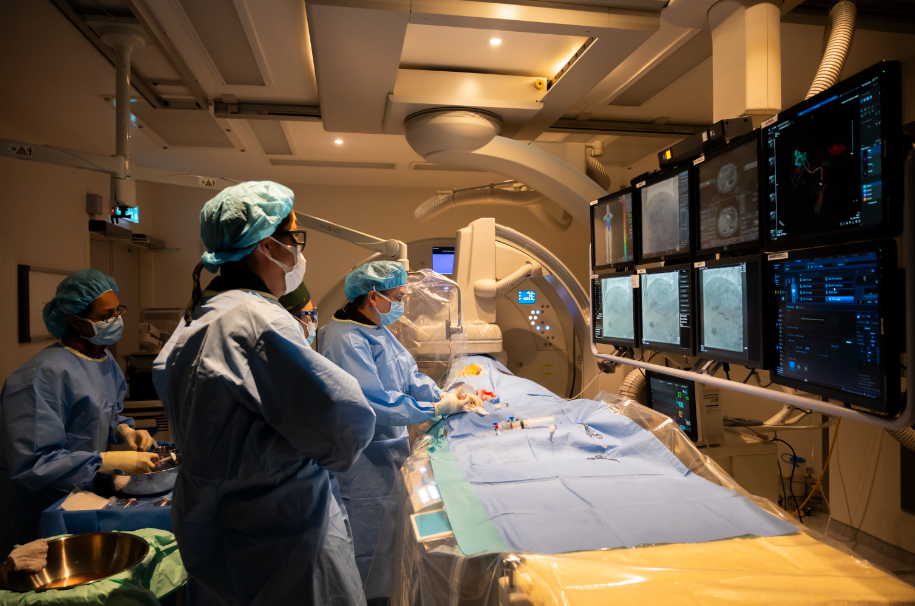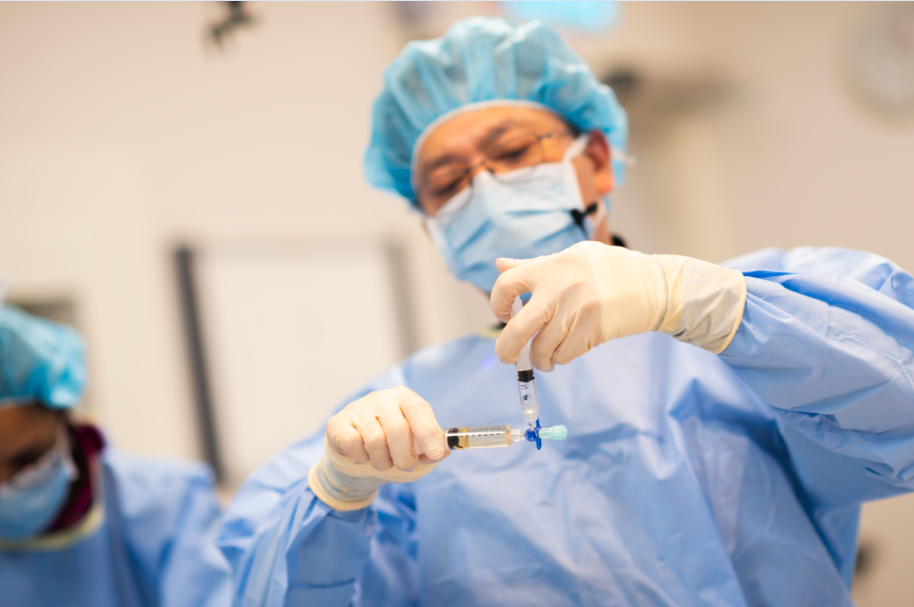
Have you had a procedure where you didn’t require open surgery, but had a catheter, needle or tube inserted into your body with the help of imaging technology? That’s one of the many areas of interventional radiology, a highly specialised area of medicine that uses minimally invasive procedures to diagnose and treat diseases. Dr Alex Tang, a Consultant Vascular and Interventional Radiologist, joins BFM to share more about this subspeciality, and the training involved.
Interventional radiology is a subspecialty in the field of radiology. In general, radiology is divided into two major components – diagnostic radiology and interventional radiology when the radiologist is involved in the treatment or procedure. In the early days, conventional radiology is mainly investigative and focuses on the diagnosis of medical disorders.
"Under the guidance of computed tomography (CT) scan, ultrasound, magnetic resonance imaging (MRI) and angiogram system, we are able to thread a catheter through the veins where we can go up north into the brain, eye and lungs.
"Along the way, we could stop by the kidney, liver and intestines, and go down south into the pelvis to treat uterine fibroids and down the legs to treat poor leg circulation, leg angioplasty to unblock arteries.
"We treat a lot of liver cancers by a procedure called transarterial chemoembolization (TACE) and developed a new technique called the transarterial chemosaturation to treat liver metastasis. Advances in technology allows us to perform a lot of things beyond our wildest imaginations," Dr Alex shared.

Once a medical graduates finishes their gazettement as a medical doctor, they have to undergo 4 years of diagnostic radiology training before they enroll into a subspecialty training. The current system in Malaysia also requires them to work for 2 years as a radiologist before enrolling into another 3 years of subspecialty training – 2 years in local institution with interventional radiology services and 1 year overseas for a fellowship training, although not mandatory.
"Being an interventional radiologist, we have the technical advantage as we can simplify or improve treatment of many conditions which previously can only be operated or perhaps nothing can be done when the patient is not fit for open surgery.
"With this minimally invasive technique, being a pinhole incision, that makes the procedure much safer with just local anaesthesia or a little sedation. This would bridge the gap for critically ill patients, lower morbidity and mortality, and decrease cost and length of hospitalisation.
"I'd like to emphasise that we work as a team and support each other. That makes us feel very rewarded when we are able to turn the tables around for a patient whose life is at risk. The specialty has grown so much with new inventions and new procedures where we could cover a big field of work. With that, the role of an interventional radiologist has come to in many situations as an alternative or replacer surgery.
"Interventional radiology is a good specialty to be in and I have no regrets even though it incurred a lot of commitments. I had to sacrifice a lot of family time. For those who want to take up interventional radiology, they need to be mentally strong and clinically ready. It is something fruitful when you can help a patient out of their critical time and that is what doctors are trained for," he said.
Source: BFM
